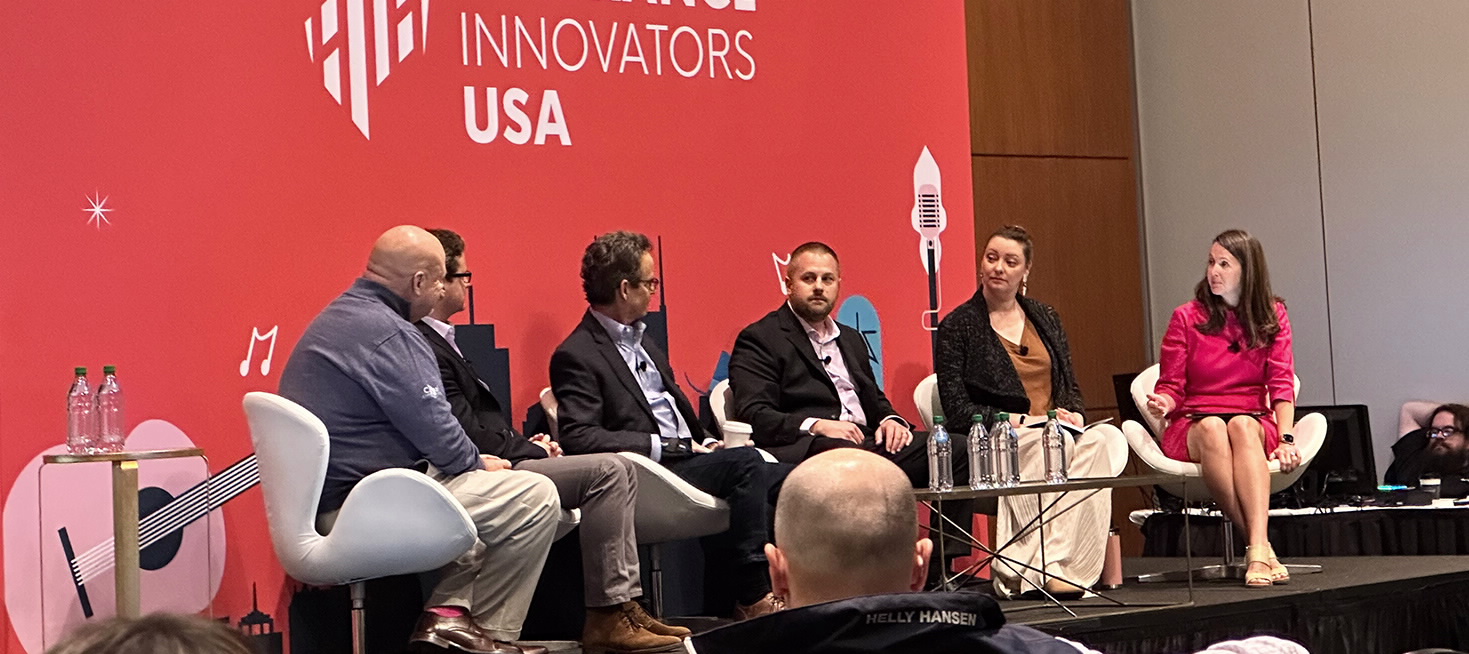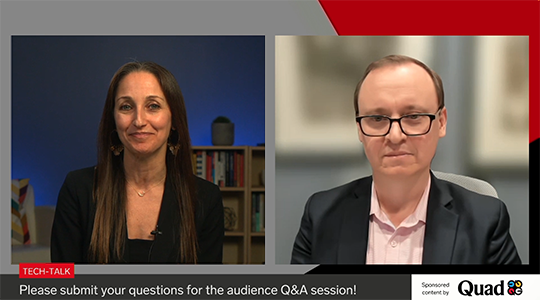Insurance leaders gathered in Nashville at the Insurance Innovators USA conference from April 17-18 to discuss the state of the industry and top-of-mind initiatives around challenges and opportunities for 2023 and beyond.
Technology remains at the forefront as legacy models go through continued digitization and insurance marketers focus on meeting customers where they are. “Innovative insurers are successfully leveraging technology to gain a competitive advantage,” as AM Best Chief Ratings Officer Stefan Holzberger put it during one session. He went on to discuss how innovation is driving higher premiums and lower loss ratios.
That theme of tech-driven transformation is the link behind each of these six key takeaways from this year’s Insurance Innovators:
1. Insurtech funding is migrating to B2B and distribution
Insurtech continues to face macroeconomic headwinds. While funding is down overall, it’s still happening in B2B and distribution. Much of this is due to consolidation to drive efficiencies. Carriers and distributors need to share more and more data (distributors need the data that carriers sit on).
2. OEMs are getting back into insurance
GM dipped a toe in the water in the past before pulling back, but is now entering the insurance market again. (Earlier this year, Insurance Journal reported that GM filed to trademark the “GM Financial Insurance Company” name.)
Volvo is also getting back into insurance on the industrial/commercial fleet side. Trenholm Palmer, Director of Digital Insurance at Volvo Financial Services, talked about one very specific industrial vehicle use case: mining sites. (Any “Gold Rush” fans like me out there?) Mines are going to look much different in the future — a remote mine in Alaska, for instance, that used massive trucks and loaders in the past will transition to using smaller, more nimble vehicles controlled by operators halfway around the world. That transformation will not only change the operational equation but will present significant opportunities for insurers.
Fred Blumer, CEO of Porsche Auto Insurance, talked about how telematics-powered car insurance is great for carriers looking to set competitive rates for drivers — but it conflicts with why most consumers purchase a Porsche! Porsche needed to meet their customers where they were.
3. The industry is moving from credit data to source data
Consumer credit scores have historically played a major role in underwriting and predictive profitability. However, many brands have acknowledged systemic bias in the credit score model and are continuing to explore alternatives. Enter source data, which is gaining momentum. In property and casual (P&C), the source data is telematics (e.g., Progressive Snapshot) and smartphone-driven advancements (e.g., iPhone Crash Detection). In health, it’s wearables and gym memberships, screening data, etc.
4. AI is changing the name of the game
As is the case with all industry conferences right now, you couldn’t go far at Insurance Innovators without hearing artificial intelligence (AI) being mentioned.
AI is helping deliver more data and make sense of the abundant data already available. It’s playing a role in the digitization across underwriting, customer-centricity, operation efficiencies and where/how embedded insurance makes sense. Yet many panelists at Insurance Innovators admitted that so far AI remains a mostly untapped opportunity.
5. Personalization and increased interaction with customers are making a comeback
There was a time insurance was extremely personal. Some of us have the memories (to others, it sounds more like folklore). Flashback to the insurance agent stopping by to talk to mom and dad, bringing candy for the kids and sending birthday cards. Agents were intimately familiar with the customers they served, and they built unforgettable personal brands.
Then, as we moved to the digital age, insurance became less and less personalized. As brands tried to align with consumer considerations around fairness, relevance, simplification and transparency, opportunities to interact with customers evaporated.
But at Insurance Innovators, a recurring topic of conversation was about how insurers are bringing back the personal touch and meeting customers where they are. Pay-as-you-drive insurance is one example of how insurers are using technology to tailor services to customers’ individual needs.
6. The increasing intersection of insurance and financial services
For me, Manan Sagar, Global Head of Insurance at Genesys, delivered the most memorable moment at Insurance Innovators. He opened his presentation with a poll, first asking the audience how recently they’d checked their bank accounts — today, in the last week, in the last month, in the last year — and 99.9% of the hands were raised between today and in the last week. Then he asked the last time members of the audience had checked their insurance. As you might surmise, the results skewed heavily toward “in the last year.”
Tracking financial health is a growing focus among consumers, and insurance should be a large part of the equation — which presents a major opportunity for insurance marketers.
The future of consumer understanding of financial health likely involves information from financial institutions and insurers living side-by-side in the same portal or app, each informing the other — in the process offering consumers a truly holistic view of their financial standing.



